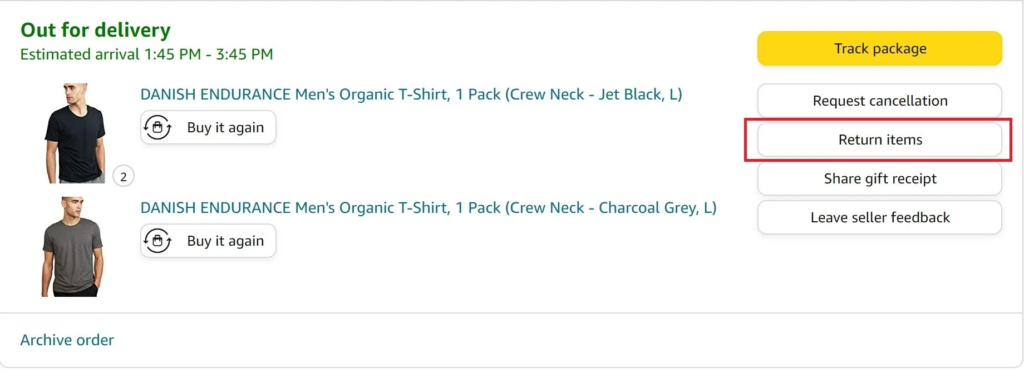As an Amazon seller, managing returns can be a time-consuming and frustrating process. However, returns are an inevitable part of e-commerce, and handling them effectively can help you maintain good customer relationships and drive sales growth. In this article, we’ll explore the best practices and actionable tips for handling Amazon FBA returns like a pro. Whether you’re a new seller looking to establish a returns policy or an experienced seller seeking to improve your returns strategy, this article will provide you with valuable insights and practical guidance. By following the tips and best practices outlined here, you can streamline your returns process, reduce costs, and maximize customer satisfaction. You also have to learn tips to optomize of Amazon FBA.
How to Understand Amazon FBA Return?

To handle Amazon FBA returns like a pro, it’s important to first understand. What Amazon FBA returns are and how they work.
Amazon FBA (Fulfillment by Amazon) is a program that allows sellers to store their inventory in Amazon’s fulfillment centers. Amazon monitors the picking, packing, and shipping of client orders. When a customer wants to return a product They can initiate a return through their Amazon account, and Amazon will handle the rest.
Amazon’s returns policies and procedures can vary by category and product type. But, generally, customers have 30 days to return an item, and sellers are responsible for issuing a refund within 2 days of returning the item.
It’s important to note that Amazon FBA returns can have a significant impact on your business. Both financially and in terms of customer satisfaction. Understanding the returns process and Amazon’s policies is crucial to effectively managing returns and maintaining a positive reputation on the platform.
What are Common Reasons for Amazon FBA Return?

To effectively manage Amazon FBA returns, it’s important to understand the common reasons why customers return products on Amazon. Some of a few reasons:
- Product not as described: Customers may return a product. If it doesn’t match the product description, images, or specifications listed on Amazon’s website.
- Damaged or defective product: Customers may return a product if it arrives damaged or defective, or if it stops working shortly after purchase.
- Wrong item shipped: Customers may receive the wrong item, color, or size, and may return it as a result.
- Changed mind: Customers may simply change their mind about a purchase and return it.
As an Amazon seller, it’s important to identify and address the root causes of returns in order to minimize their impact on your business. This may involve improving product listings, enhancing quality control processes, or implementing better customer service practices. By addressing the common reasons for returns, you can reduce your return rates and improve customer satisfaction.
Best Practices for Managing Amazon FBA Return?

To handle Amazon FBA returns like a pro, there are several best practices. You can implement to streamline the returns process and reduce their impact on your business. Here are a few tips:
- Use automation tools: Consider using automation tools like software that integrates with Amazon to streamline the returns process. These tools can automate the returns process and help you process returns faster.
- Set up a returns policy: Develop a clear and concise returns policy that outlines your return window. The condition products must be in to be eligible for a return, and how you will handle returns. Make sure to communicate your policy clearly to customers.
- Improve product listings: One of the most common reasons for returns is that the product doesn’t match the description. To avoid this, make sure your product listings are accurate and complete, and include high-quality images.
- Enhance quality control: Make sure you have a robust quality control process in place. Ensure that products are shipped in good condition and are in working order.
- Monitor and analyze returns data: Regularly monitor your returns data to identify trends and patterns, and use this information to make data-driven decisions about your returns strategy.
- Provide excellent customer service: Provide excellent customer service throughout the returns process, including prompt and courteous communication and timely refunds.
By implementing these best practices, you can reduce the impact of returns on your business, improve customer satisfaction, and increase sales.
What are Actionable Tips for Handling Amazon FBA Return?

In addition to best practices, there are some actionable tips you can implement to handle Amazon FBA returns like a pro. Here are a few tips to consider.
- Respond promptly to return requests: Make sure to respond to return requests as quickly as possible. This can help prevent negative feedback from customers and improve your seller rating.
- Streamline the returns process: Make the returns process as easy as possible for customers by including clear instructions and a prepaid return label in the package.
- Inspect returned items carefully: When you receive a returned item. Inspect it carefully to ensure that it’s in the same condition as when it was shipped. If the item is damaged or missing parts, you may be able to file a claim with Amazon.
- Offer replacements or exchanges: Consider offering replacements or exchanges for returned items. This can help retain customers and build loyalty.
- Refund promptly: Make sure to issue refunds promptly and accurately to avoid negative feedback from customers.
- Follow up with customers: Consider following up with customers after a return. To ensure that they were satisfied with the resolution.
By implementing these actionable tips, you can improve your returns process, minimize negative feedback, and maintain positive customer relationships.
Metrics to Track for Evaluating Your Amazon Return Strategy

To evaluate the effectiveness of your Amazon FBA returns strategy, it’s important to track key metrics. Here are some metrics to consider
- Return rate: This metric measures the percentage of orders that are returned. A high return rate may indicate issues with the product quality or the accuracy of product descriptions.
- Reason for return: Track the reasons for returns to identify trends and patterns. This information can be used to make data-driven decisions about product listings, quality control, and customer service.
- Time to process returns: Measure the time it takes to process returns. From the time the return is requested to the time the refund is issued. A shorter processing time can improve customer satisfaction.
- Refund accuracy: Track the accuracy of refunds to ensure that customers are receiving the correct refund amount.
- Customer satisfaction: Measure customer satisfaction with the returns process through feedback and ratings. This information can help identify areas for improvement.
By tracking these metrics, you can evaluate the effectiveness of your returns strategy, identify areas for improvement, and make data-driven decisions to reduce returns and improve customer satisfaction.
Conclusion
Managing Amazon FBA returns is an important aspect of running a successful e-commerce business. By understanding the common reasons for returns and implementing best practices and actionable tips. you can streamline the returns process and minimize its impact on your business.
Key best practices include using automation tools, setting up a clear returns policy, improving product listings and quality control, and providing excellent customer service. Actionable tips include responding promptly to return requests, streamlining the returns process, and offering replacements or exchanges.
Finally, tracking key metrics such as return rate, the reason for return, time to process returns, and refund accuracy. Customer satisfaction can help evaluate the effectiveness of your returns strategy and identify areas for improvement. By following these strategies, you can reduce returns, increase customer satisfaction, and build a successful Amazon FBA business.






